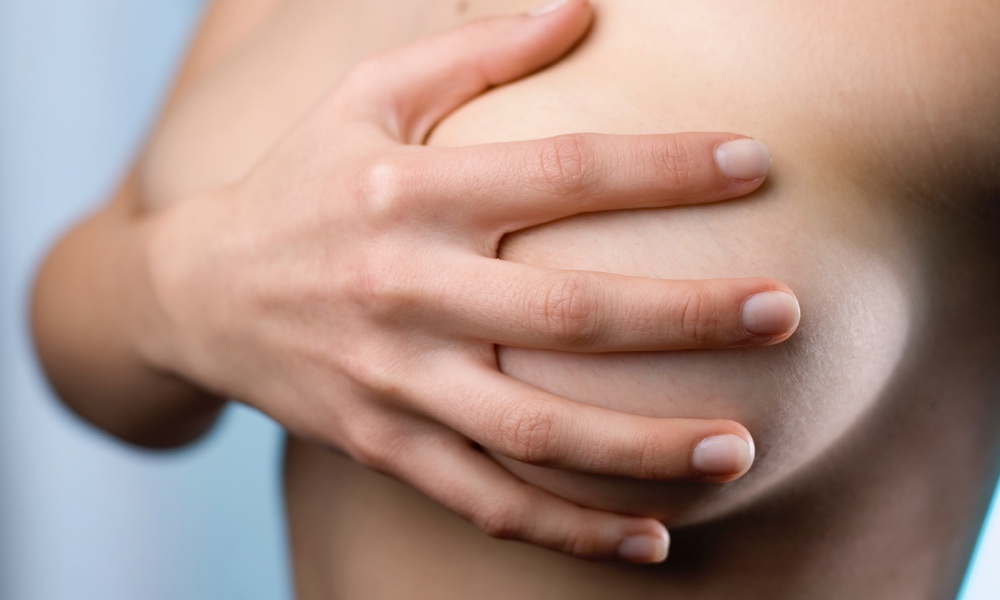Breast cancer will affect about 300,000 people in the U.S. and cause 43,000 deaths by the end of this year, according to the American Cancer Society. Yet despite these numbers, 75 percent of women and 91 percent of men do not believe they will get breast cancer.
Those are the findings of a new survey by researchers at Ohio State University. While over 90 percent of the respondents recognized a lump as a symptom of breast cancer, less than half were aware of breast cancer's other, generally lesser-known, symptoms:
- Retracted, inverted or downward facing nipples
- An indentation or puckering in the breast that appears when the arms are raised
- Loss of feeling in part of the breast
- Discharge from a nipple
- Thickening or pitting in the skin of the breast
These are among the early-warning signs women and men should look for. Most breast cancers do not present with a lump detectable by touch. If they do, it usually indicates a fast-growing or late-stage cancer that is less treatable.Both the American College Radiology and the American College of Obstetrics and Gynecology recommend those at average risk for breast cancer start getting screening mammograms at age 40.
“It is very important for people to be familiar with the look and feel of their own breast tissue, so that subtle changes can be evaluated quickly to rule out breast cancer,” Ashley Pariser, a co-author on the survey, told TheDoctor.
The OSU researchers surveyed more than 1,000 people online and by telephone over a three-day period. Only 31 percent of respondents knew a retracted, inverted or downward-pointing nipple could be a symptom of breast cancer, and 39 percent recognized breast puckering as a possible symptom. Just 41 percent of respondents recognized loss of breast feeling as a possible symptom, while 45 percent knew pitting or thickening of the breast skin could be a symptom, and 51 percent knew nipple discharge could be a symptom.
Screening mammography remains the best tool for early detection, said Pariser, a breast medical oncologist and director of breast cancer survivorship services at The Ohio State University Comprehensive Cancer Center - Arthur G. James Cancer Hospital and Richard J. Solove Research Institute. However, according to the survey results, 33 percent of all women, including 44 percent of those under the age of 30, remain confused about screening recommendations.
Both the American College Radiology and the American College of Obstetrics and Gynecology recommend those at average risk for breast cancer start getting screening mammograms at age 40, Pariser said. She pointed out that with their recommendations, different professional societies are trying to balance the importance of early detection with the risk of false positives, or something found on imaging that needs follow-up, but turns out not to be cancer.While over 90 percent of the respondents recognized a lump as a symptom of breast cancer, less than half were aware of breast cancer's other, generally lesser-known, symptoms.
“It is important for people to be aware of their family history,” Pariser said. Certain genetic mutations, such as BRCA1 or BRCA2, might put someone at increased risk for breast cancer. Those of Ashkenazi Jewish or African descent also have an increased risk. People who received chest radiation at a young age for another cancer or those with a previous history of breast cancer are at increased risk as well. Those with family members, such as parents or siblings, grandparents, aunts or uncles who had breast cancer, are also at increased risk.
That includes men, too. Pariser pointed out that one percent of breast cancers occur in men, and usually present as nipple changes. Knowing the health history of male relatives is important. “Men should feel empowered to seek medical attention for concerning symptoms, especially if they have a strong family history of breast cancer,” Pariser urged.
“We have made great strides in detecting breast cancers in far earlier, more treatable stages,” she added. As more people become knowledgeable about the early signs of breast cancer, it will only help this process further. It should also encourage everyone to feel safe about addressing their concerns with their doctors in a timely way.





